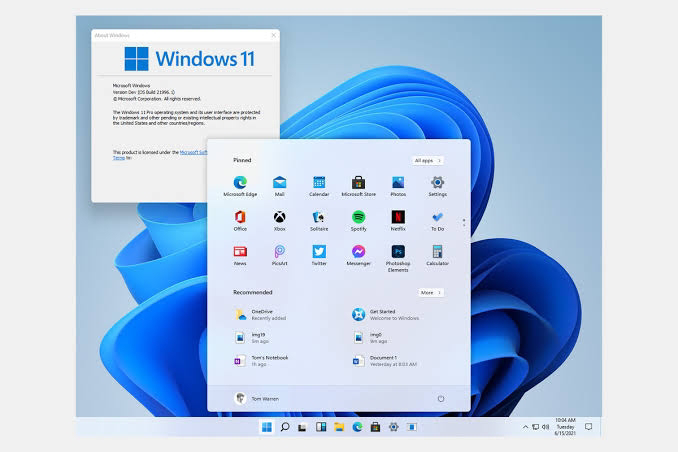Windows 11 new features
and how to use them
With Windows 11 Insider Preview released and the stable version on
its way, there is a fresh new design and
a bunch of new features aimed at streamlining your PC and helping you be more
productive, whether you're using your laptop or tablet at home or in the
office.
Here are the best new
Windows 11 features we've seen announced so far, and how you'll use them, based
on what Microsoft has demonstrated. We'll update this post with more thorough
instructions once the beta version comes out next week and we can try them
ourselves.
How to use the new Windows 11 features
* Android apps
You'll be able to
download Android apps on Windows 11.
What it is: Android apps will be built into
Windows 11 natively through the new
Microsoft Store -- a change Windows users have
been waiting on for years. Though you could access Android apps on your Windows
10 PC in certain cases (like if you have a Samsung Galaxy phone), Windows 11 marks the first time everyone will be able to
download them directly onto your PC.
How you'll use it: Android apps will
be in the new Microsoft Store via Amazon's Appstore. That means you'll need to
download the Amazon Appstore to access the nearly 500,000 apps available there,
including Disney Plus, TikTok, Netflix, Pinterest, Uber and more. However, you
won't be able to access every Android app found in the Google Play Store.
To get started, you'll need to
download the Amazon Appstore and sign into or create an Amazon account. Then
you'll be able to search for free or paid apps as you would on any other
platform. Android apps will be integrated into the Start bar and will also
appear on the Taskbar with their own windows.
* Widgets
Widgets on Windows 11
will give you customizable, at-a-glance information.
What it is: Windows
11 will add Widgets to the interface --
an AI-powered customizable feed that slides out to show you info such as news,
weather, a glimpse at your calendar and to-do list and your recent photos.
Widgets are similar to a feature called news and interests found in a recent Windows 10 update.
How you'll use it: On
the newly redesigned taskbar, you'll find a button for Widgets. When you click
or tap it, a panel will slide out from the left side of your screen with a
series of widgets that give you the at-a-glance information you're looking for.
You can also expand it to be full screen.
* Microsoft Teams
Bring up the Microsoft
Teams Chat bar directly from the taskbar in Windows 11 for easier access to
your contacts.
What it is: Windows
11 will build Microsoft's video chat platform Teams directly into the operating system, making it easier
to access for daily use. You can connect with others on Teams across Windows,
Android, Mac or iOS.
How you'll use it: Teams
will now appear in the taskbar. Click the Teams icon to launch a Chat tool,
letting you choose if you want to message, text, voice or video call one of
your contacts. Click Meet or Chat, and choose who you want to contact. Or, open
the full version of Microsoft teams by clicking the box at the bottom of the
Chat screen.
* Desktops
Easily toggle between
different desktops in Windows 11.
What it is: Windows
11 will let you more easily create separate virtual
desktops for each part of your life, and
customize them with different wallpapers, so you can create a desktop for
personal use, work, school, gaming or anything else, and easily toggle between
them. This is similar to the Mac OS virtual desktop feature.
How you'll use it: We
don't have as much information on how to set up the new desktops yet, but from
Microsoft's demo, it looks like once you do, you'll be able to scroll to the
bottom of your screen and see a window slide up with the different desktops
you've created, letting you switch back and forth between them with one click.
* Snap Layouts
What it is: When
you're working in a bunch of open windows, Windows 11 will let you arrange them
in different layouts on the screen, and will save all of those windows in that
arrangement.
How you'll use it: When
you open a window, you'll see a button that looks like a square in the top
right corner, in between the X and the minimize button. Click that to see
different layout options for that window, and select the layout and the
position within the layout that you want to place that window.
* Snap Groups
Bring together groups of
apps and windows with Snap Layouts, and easily maximize and minimize the entire
bunch with Snap Groups in Windows 11.
What it is: Snap
Groups are the set of open windows that you saved in Snap Layouts, found in the
taskbar for easy access to call up once again, so you can minimize or maximize
them as a group.
How you'll use it: Hover
over your browser in the taskbar (it's unclear if you need to be using Microsoft
Edge to do so, as Microsoft did in its demo). You'll see the different groups
of sites and apps you created pop up. Click the one you want to open the whole
group again.
Cheers!!!
Edited By AdeDanCompTech

























